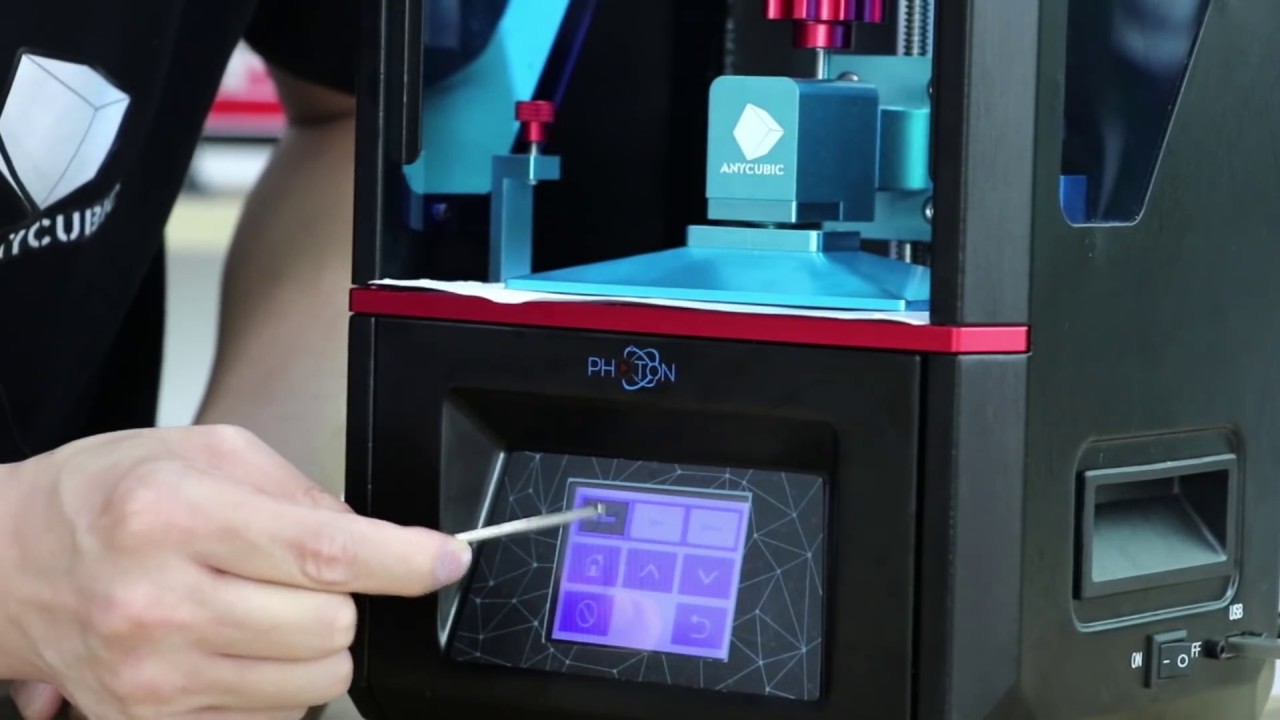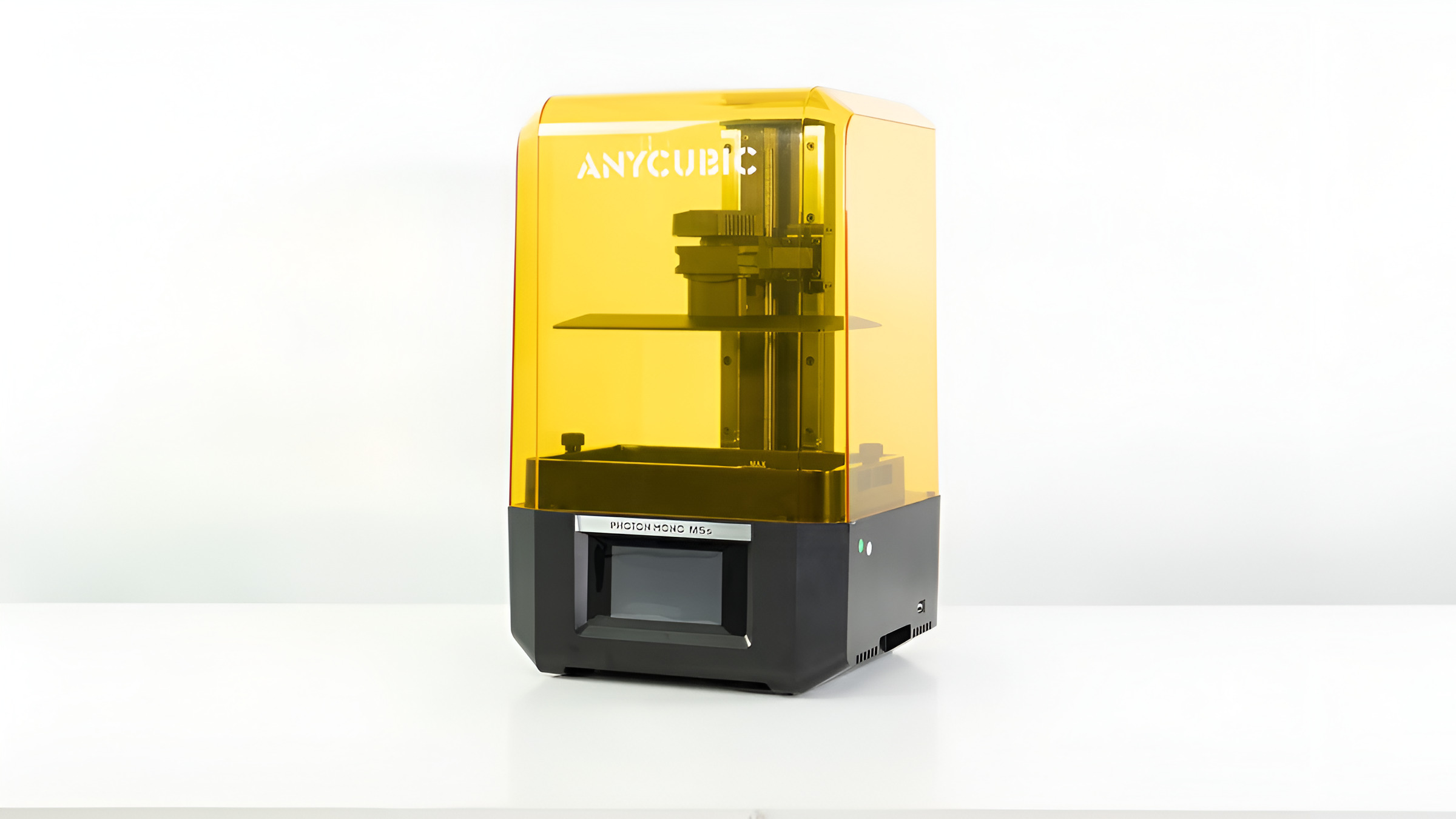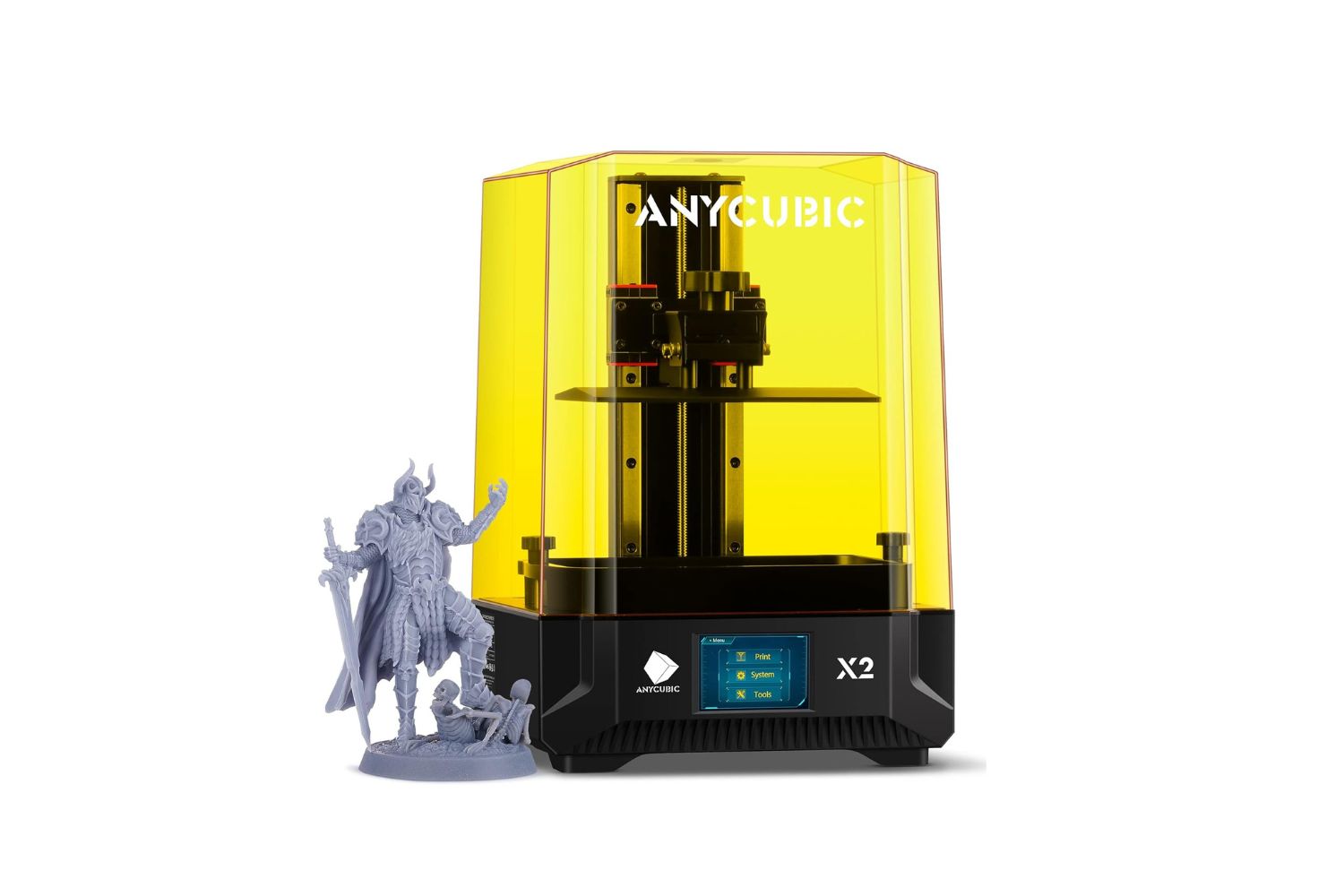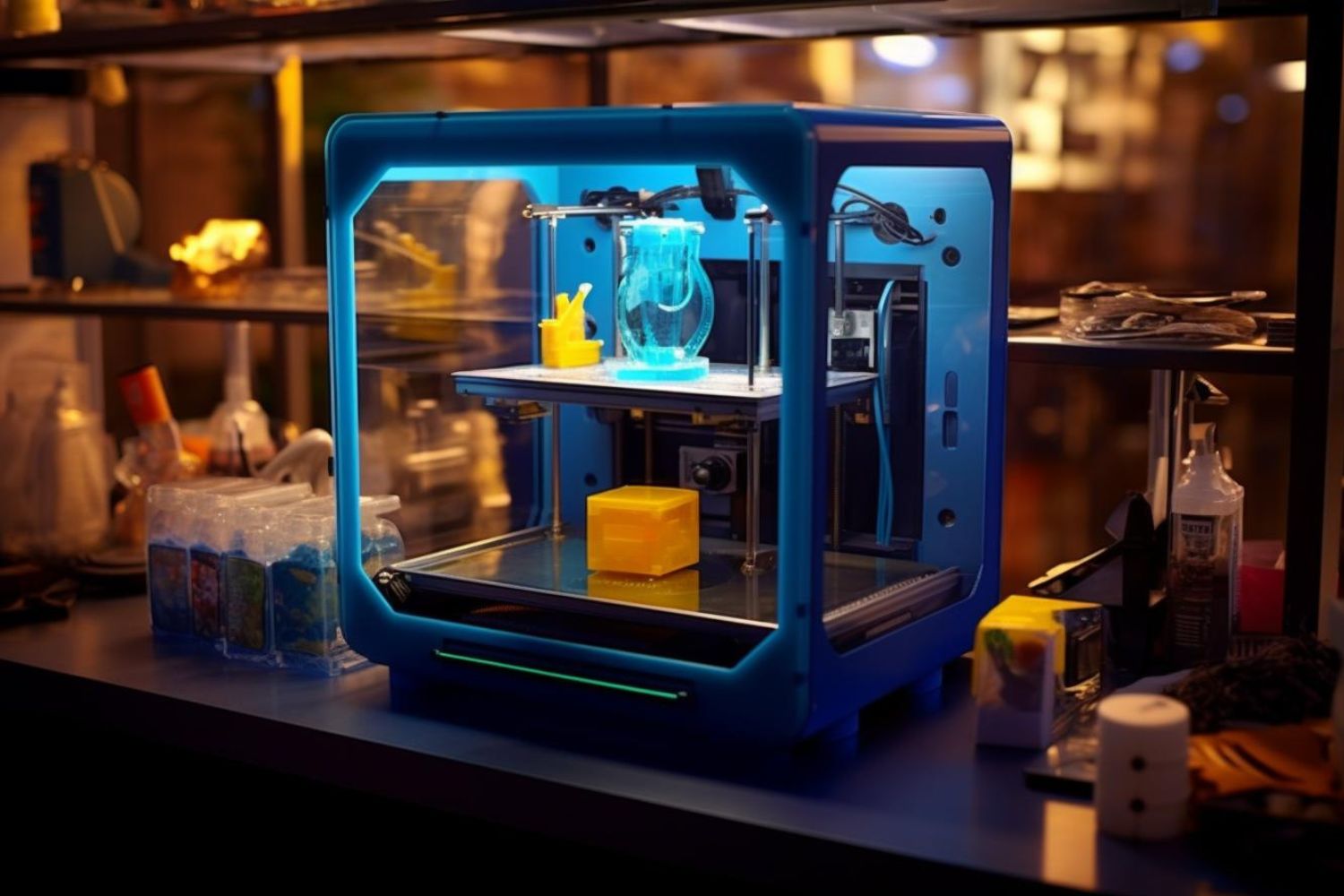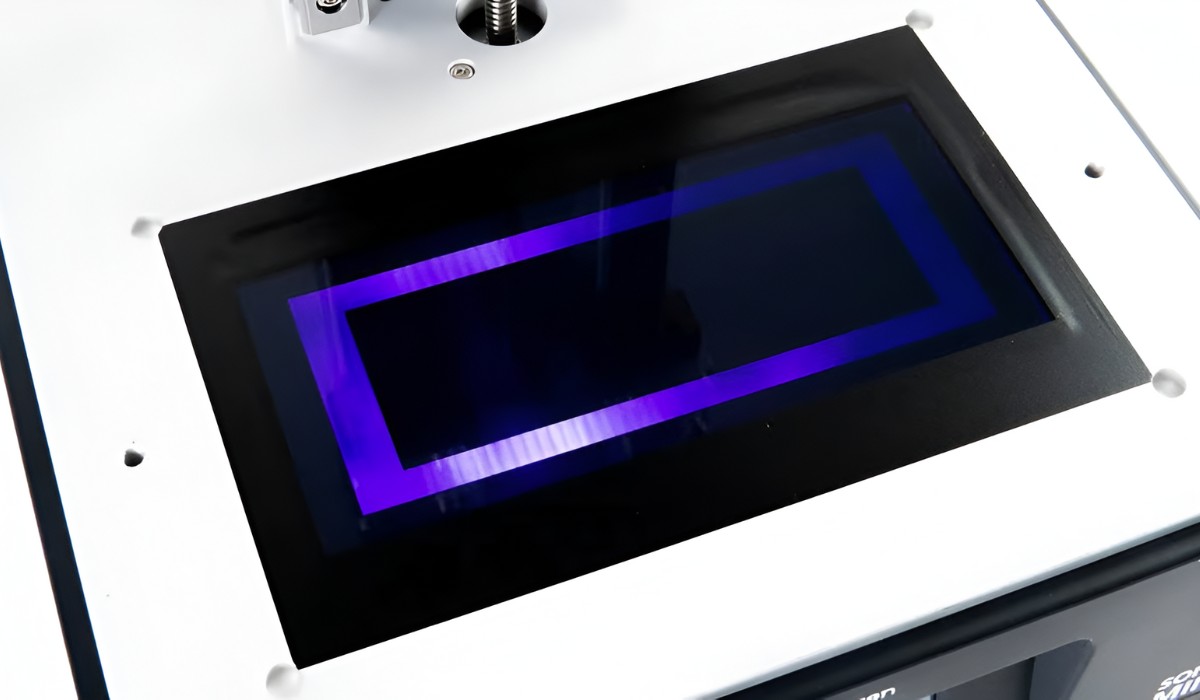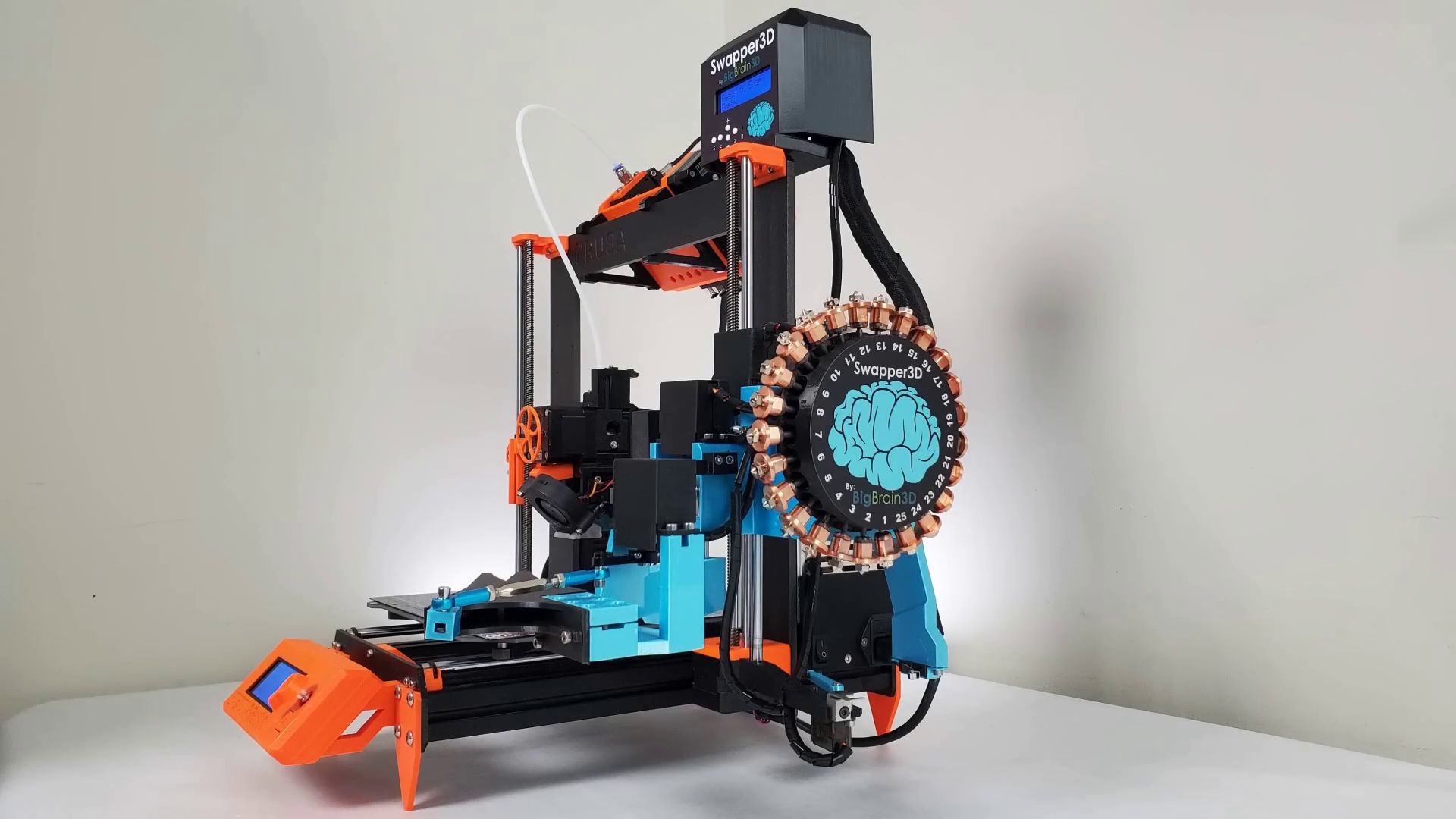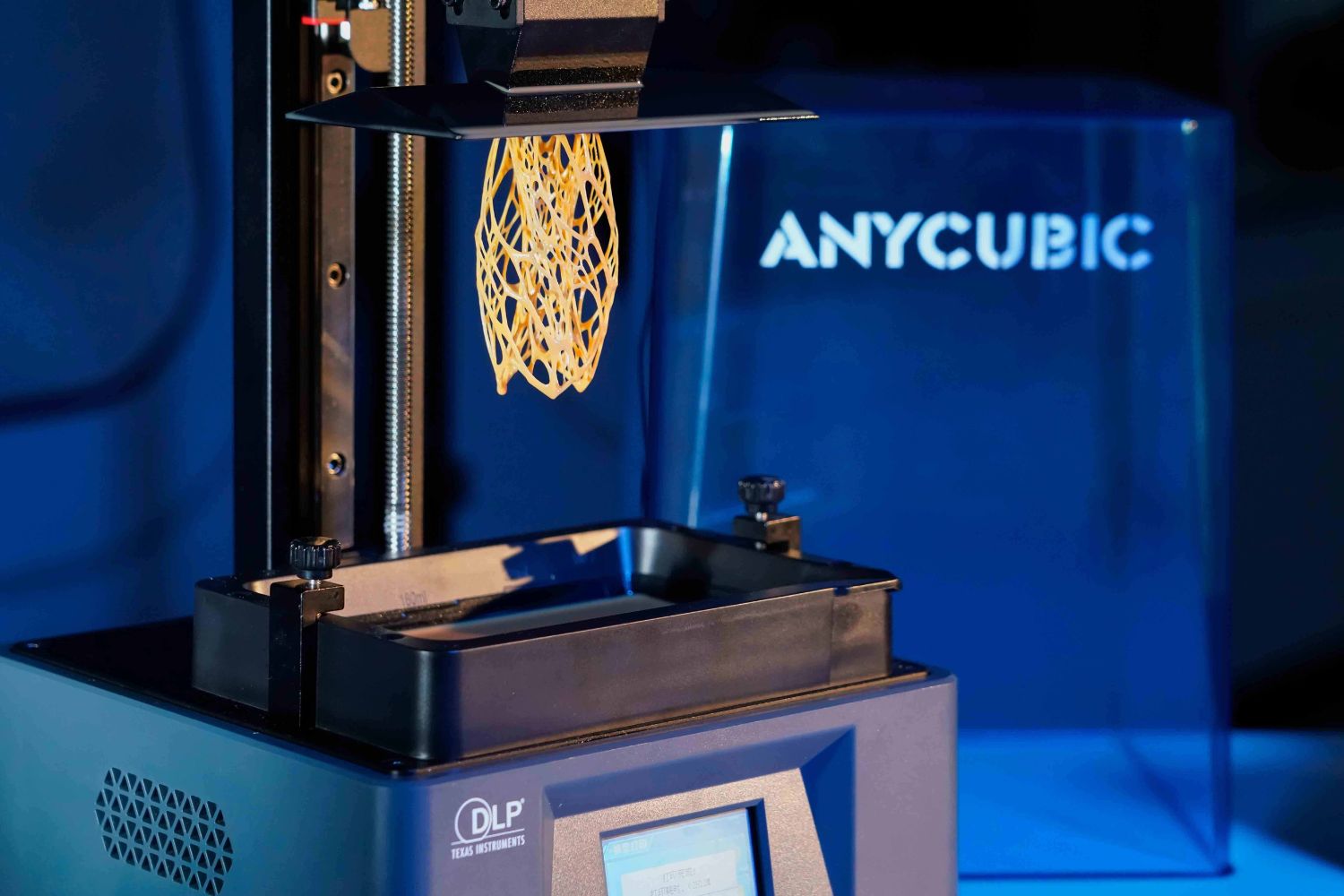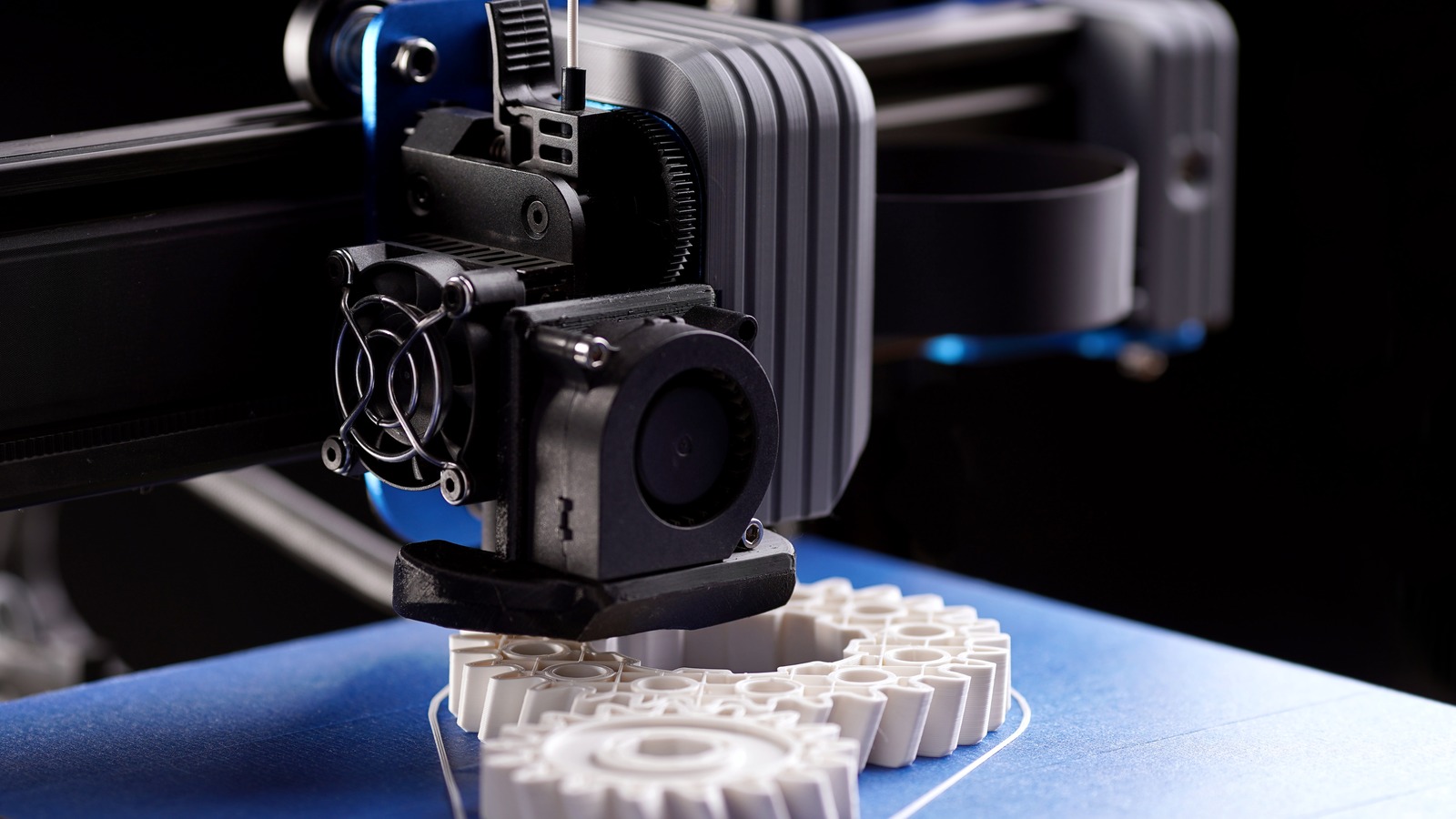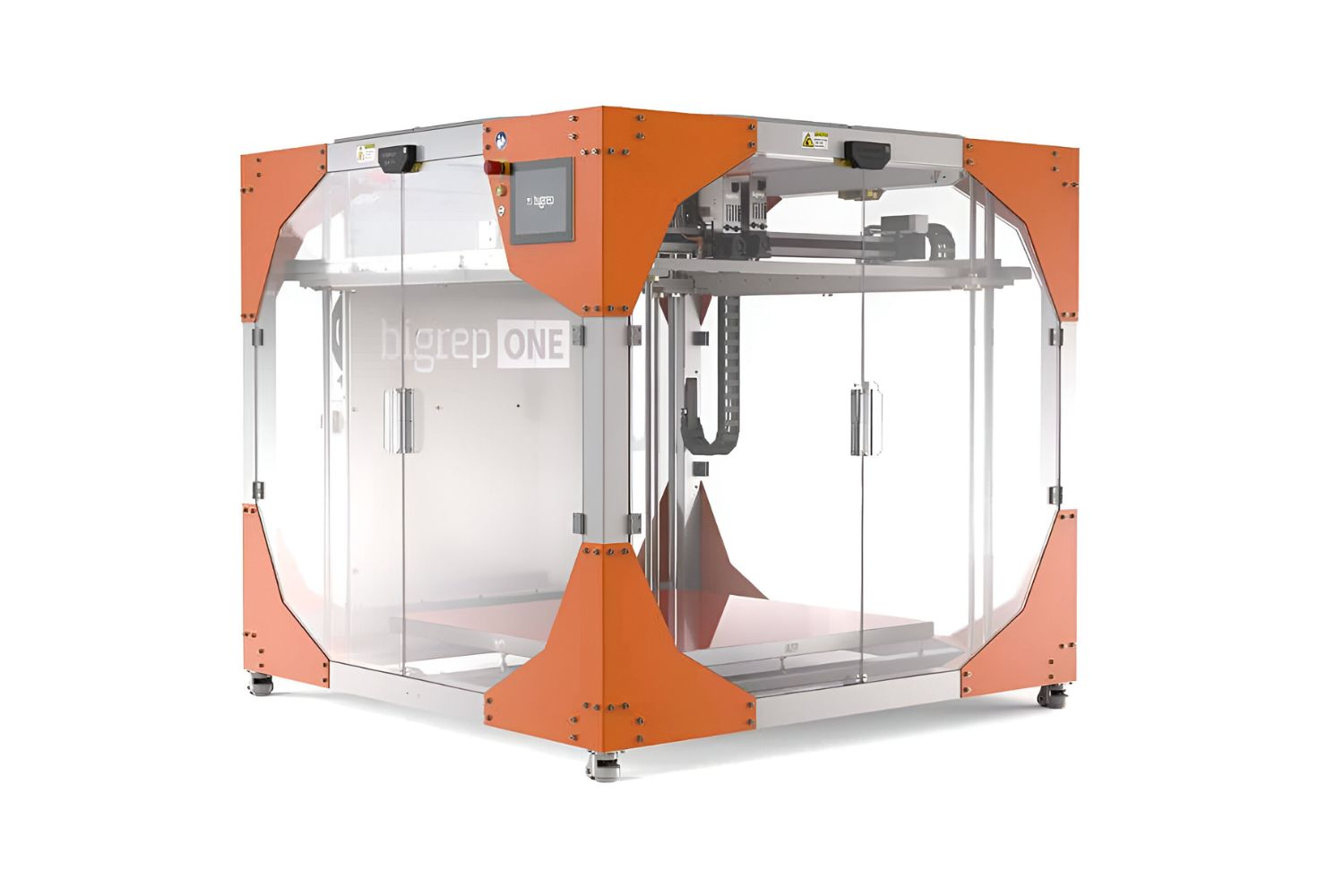Introduction
Welcome to the world of 3D printing! Whether you’re a hobbyist, a designer, or an entrepreneur, owning an Anycubic 3D printer opens up endless possibilities for creating three-dimensional objects with precision and creativity. With its user-friendly interface and high-quality prints, the Anycubic 3D printer is a popular choice among enthusiasts. In this article, we will guide you through the process of using your Anycubic printer, from setting it up to troubleshooting common issues.
Before we dive into the technical details, let’s take a moment to appreciate the magic of 3D printing. It allows you to bring your imagination to life, transforming virtual designs into tangible objects. Whether you’re interested in prototyping, customization, or simply exploring your creativity, 3D printing offers a whole new dimension of possibilities.
Setting up your Anycubic 3D printer is the first step on your 3D printing journey. It’s important to follow the manufacturer’s instructions carefully to ensure proper functionality and to maximize the performance of your printer. Once you have successfully set up your printer, you can start exploring the various aspects of 3D printing, from choosing the right filament to adjusting print settings.
The process of 3D printing involves converting a digital 3D model into a physical object layer by layer. This is achieved through a process called additive manufacturing, where material is deposited in successive layers to build the final product. Understanding this process is essential to optimize your prints and achieve the desired results.
Choosing the right filament is crucial for successful 3D printing. The Anycubic 3D printer is compatible with a wide range of filaments, including PLA, ABS, PETG, and more. Each filament has its own unique properties, such as strength, flexibility, and temperature resistance. Selecting the appropriate filament for your project will ensure that your prints are durable and meet your requirements.
Preparing your 3D model for printing involves several steps, including scaling, orientation, and support generation. These steps are crucial for achieving the desired outcome and minimizing print failures. We will walk you through the process of preparing your model using slicing software, which converts your 3D model into instructions that the printer can understand.
Loading the filament into your Anycubic 3D printer is a straightforward process, but it requires attention to detail. Proper filament loading ensures a steady flow of material during printing, preventing jams and uneven extrusion. We will guide you through the steps of loading the filament correctly, ensuring a smooth printing experience.
Calibrating your Anycubic 3D printer is essential to achieve precise and accurate prints. This involves adjusting the printer’s settings, such as the nozzle height and bed leveling. Calibration ensures that the first layer adheres properly, minimizing print failures and improving overall print quality. We will provide you with step-by-step instructions to calibrate your printer effectively.
Adjusting print settings is another crucial aspect of achieving high-quality prints. Parameters such as layer height, print speed, and infill density can significantly impact the final outcome. We will discuss the key print settings and provide recommendations based on different scenarios, allowing you to customize your prints according to your specific needs.
Initiating a print job is the moment when your virtual design comes to life. We will guide you through the process of transferring your sliced file to the printer and initiating the print. It’s an exciting moment, and with the knowledge gained from this article, you can confidently hit that print button and watch your creation take shape.
Once your print is complete, post-processing can enhance the final result. We will share tips and techniques for removing supports, sanding, and painting your prints to achieve a professional-looking finish. Post-processing allows you to add that personal touch and take your prints to the next level.
Despite our best efforts, sometimes things go wrong during the 3D printing process. We will address common issues and provide troubleshooting tips to help you identify and fix problems. From print adhesion issues to extrusion problems, we’ve got you covered.
Finally, we will share some tips and tricks to help you achieve successful prints. These include optimizing print settings, using different infill patterns, and utilizing supports effectively. These insights will not only improve the quality of your prints but also save you time and material in the long run.
Now that you have a good understanding of what’s ahead, let’s dive into the world of Anycubic 3D printing. Get ready to unlock your creativity and bring your ideas to life!
Setting Up Your Anycubic 3D Printer
Setting up your Anycubic 3D printer is an exciting first step that requires careful attention to detail. Follow these steps to ensure a smooth and successful setup process:
- Unboxing: Begin by carefully unpacking your Anycubic 3D printer. Check that all the components and accessories are included and undamaged.
- Assembly: Follow the manufacturer’s instructions to assemble your printer. This usually involves attaching the frame, connecting cables, and securing the necessary components in place.
- Leveling the Bed: Leveling the print bed is crucial for achieving proper adhesion and accurate prints. Most Anycubic printers come with manual bed leveling. Use the provided leveling tool and adjust the knobs or screws to make sure the bed is even and parallel to the printer’s frame.
- Installing the Print Head: Install the print head or extruder according to the manufacturer’s instructions. Make sure it is properly aligned and securely fastened.
- Connecting to Power: Plug in your Anycubic printer and connect it to a power source using the provided power cable. Ensure that the voltage settings are correct for your region.
- Connecting to Computer: Depending on the model, you may need to connect your printer to a computer via USB or use an SD card to transfer print files. Follow the instructions provided to establish the connection.
- Installing Software: Download and install the recommended slicing software for your Anycubic printer. This software allows you to prepare 3D models for printing by converting them into printable files with specific printer settings.
- Testing and Calibration: Before starting your first print, it’s important to perform a test print and calibrate the printer. This will help ensure that the nozzle height, bed leveling, and other settings are correctly adjusted.
- Checking Filament: Make sure you have the appropriate filament for your print job and check that it is loaded correctly in the printer. Ensure that the filament is properly fed into the extruder and ready for printing.
By carefully following these steps, you will have your Anycubic 3D printer set up and ready to go. Remember to refer to the manufacturer’s instructions for specific details related to your model. Once your printer is set up, you can start exploring the world of 3D printing and bring your creative ideas to life with ease.
Understanding the 3D Printing Process
The 3D printing process, also known as additive manufacturing, is a revolutionary technology that allows you to transform digital designs into physical objects. Understanding the basics of this process will help you optimize your prints and achieve the desired results.
The 3D printing process involves building a three-dimensional object layer by layer. This is in contrast to traditional manufacturing methods that involve subtracting or molding material to create the final product. With 3D printing, you start with a virtual 3D model, which is then sliced into thin layers in preparation for printing.
Once the 3D model is sliced, the printer’s software generates instructions in the form of G-code, which tells the printer how to move and extrude the filament to create each layer. The printer’s nozzle moves along the X, Y, and Z axes, depositing the material in a precise pattern according to the instructions.
The material used in the 3D printing process is typically a thermoplastic filament, such as PLA or ABS. The filament is heated and melted by the printer’s extruder, which then deposits it onto the print bed or the previous layers of the print. As the material cools down, it solidifies and bonds with the previous layers, gradually building up the final object.
Layer height, also known as the resolution, determines the thickness of each layer. A smaller layer height results in finer details and smoother surfaces but also increases print time. It is essential to find the right balance between resolution and print speed, depending on your specific needs and the complexity of the design.
In addition to layer height, other factors such as print speed, extruder temperature, and cooling settings contribute to the overall print quality. Finding the optimal settings for your specific filament and print job may require some experimentation and adjustments.
Support structures are often necessary for prints that have overhangs or complex geometries. These structures provide temporary support for the layers above and are removed after the print is complete. Some slicing software allows you to generate support structures automatically, while others require manual placement.
Understanding the 3D printing process will help you identify potential issues and make informed decisions when optimizing your prints. By getting familiar with the G-code instructions and becoming familiar with the various settings and parameters, you can take full advantage of your Anycubic 3D printer and achieve high-quality, accurate prints.
Choosing the Right Filament
Choosing the right filament for your Anycubic 3D printer is crucial for producing high-quality prints that meet your specific requirements. There are several factors to consider when selecting a filament, including material properties, printability, and intended use.
One of the most commonly used filaments for 3D printing is PLA (Polylactic Acid). PLA is a biodegradable and eco-friendly material that is easy to print with. It has a low printing temperature, minimal warping, and produces less odor compared to other materials. PLA is an excellent choice for beginners and is suitable for a wide range of applications, including prototyping, decorative objects, and educational projects.
ABS (Acrylonitrile Butadiene Styrene) is another popular filament choice. ABS is known for its durability, strength, and heat resistance. It requires a higher printing temperature and can be prone to warping if not printed with an enclosed printer or proper heating solutions. ABS is commonly used for functional parts, engineering prototypes, and objects that need to withstand higher temperatures.
If you’re looking for a filament with excellent mechanical properties, consider PETG (Polyethylene Terephthalate Glycol-Modified). PETG offers a good balance between strength, flexibility, and temperature resistance. It is less prone to warping compared to ABS and has high impact resistance. PETG is suitable for a wide range of applications, including functional parts, mechanical components, and outdoor prints.
For specialized applications, there are filaments with unique properties. TPU (Thermoplastic Polyurethane) is a flexible filament that is ideal for creating objects that require elasticity and durability. It is commonly used for 3D printing phone cases, rubber-like objects, and prosthetics.
Other filaments to consider include wood-filled filament, which gives a natural wood-like finish, and metallic filament, which provides a metallic appearance. These specialized filaments can add a unique touch to your prints and open up new possibilities for creativity.
When choosing a filament, it’s essential to also consider the diameter and color options. Most filaments come in either 1.75mm or 2.85mm diameter, so ensure that your printer is compatible with the filament size you choose. As for color, consider the aesthetic appeal of your prints and select a filament that suits your project’s requirements.
Before purchasing a filament, check the manufacturer’s recommendations and guidelines to ensure compatibility with your Anycubic printer. Experimenting with different filaments and understanding their properties will help you achieve the desired results and expand your possibilities with 3D printing.
Preparing Your 3D Model
Before printing your 3D model, it’s important to properly prepare it to ensure successful and accurate prints. Preparing your 3D model involves several steps, including scaling, orientation, and generating support structures if needed. Let’s explore these steps in detail:
Scaling: Adjusting the size of your 3D model is an important step to ensure that it matches your desired dimensions. Most 3D modeling software allows you to scale your model up or down according to your needs. Consider the capabilities of your printer and the intended purpose of the print when determining the appropriate scale.
Orientation: The orientation of your model during printing can impact the overall quality and strength of the print, as well as the need for support structures. Examining your model from different angles and considering how it will be printed layer by layer is crucial. Avoid overhangs and ensure that the model’s surfaces are well supported to minimize the need for supports.
Generating Support Structures: In some cases, especially if your model has complex geometries or overhangs, support structures may be necessary. Support structures provide temporary support for areas of the print that would otherwise sag or collapse during printing. Most slicing software has automatic support generation features, but you can also manually add or remove supports as needed. Carefully consider the impact on the aesthetics and post-printing cleanup when generating support structures.
Slicing: Slicing is the process of converting your 3D model into a series of instructions (G-code) that the printer can interpret. This involves setting parameters such as layer height, print speed, and infill density. Selecting the appropriate slicing settings will depend on factors such as the complexity of the model, desired print quality, and print time. Take the time to explore the slicing software’s features and experiment with different settings to achieve the desired outcome.
File Format: Ensure that your 3D model is saved in a compatible file format that is supported by your slicing software and Anycubic printer. The most common file formats for 3D printing are .STL and .OBJ. Check the software and printer specifications to confirm the recommended file format.
Checking for Errors: Before proceeding with the print, it’s essential to check your 3D model for any errors or issues that could affect the print quality. Look for intersecting or overlapping geometry, incomplete surfaces, or missing details. Utilize 3D modeling software or specialized repair tools to fix any identified issues and ensure a smooth printing process.
Taking the time to properly prepare your 3D model before printing will significantly improve the chances of a successful print job. By considering the scaling, orientation, support structures, slicing settings, file format, and checking for errors, you’ll have a well-prepared model that is ready to be printed on your Anycubic 3D printer.
Slicing and Generating G-code
Once you have prepared your 3D model, the next step in the 3D printing process is slicing and generating G-code. Slicing software takes your model and converts it into a series of instructions that your Anycubic 3D printer can understand. Let’s explore this process in more detail:
Selecting Slicing Software: There are several slicing software options available, both free and paid, that are compatible with Anycubic printers. Popular choices include Cura, Simplify3D, PrusaSlicer, and more. Choose software that suits your preferences and provides the features you need for your specific print job.
Loading the Model: Import your 3D model file into the slicing software. Most software allows you to adjust the position, scale, and orientation of the model within the print volume. Make sure the model sits properly on the virtual build platform to ensure accurate printing.
Configuring Print Settings: The slicing software provides a range of settings that determine the specifics of the print job. Adjust parameters such as layer height, print speed, temperature, infill density, and support structures according to your requirements. Refer to the printer’s specifications and material recommendations to make informed decisions.
Slice and Preview: Once you have defined the print settings, use the slicing software to process the model and generate the G-code. The software divides your model into layers, calculates the toolpath, and generates the instructions for the printer to follow. The preview feature allows you to visualize each layer and examine how the print will progress.
Reviewing and Adjusting: Thoroughly examine the preview to ensure that there are no missing or unintended features, gaps, or other anomalies. Check for overhangs that may require support structures and assess the overall print quality. If necessary, make adjustments to the settings and reslice the model to achieve the desired outcome.
Exporting the G-code: Once you are satisfied with the settings and preview, export the generated G-code file. Save it to an SD card or transfer it directly to your Anycubic printer via USB, depending on the connectivity options available for your specific model.
Loading the G-code: Insert the SD card into the printer or connect it to your computer, and select the generated G-code file from the printer’s interface. Verify that the correct file is selected, and the printer is ready to start the print job.
By using slicing software to generate G-code, you can optimize your prints for the Anycubic 3D printer and achieve accurate and high-quality results. It’s important to experiment with different settings and become familiar with the software to find the optimal configuration for your specific print jobs.
Loading the Filament
Properly loading the filament into your Anycubic 3D printer is essential for a successful print job. Follow these steps to ensure that the filament is loaded correctly:
- Prepare the Filament: Before starting the loading process, make sure your filament is properly prepared. Ensure that the filament spool is free from tangles or knots, and check that the end of the filament is cut cleanly and at a 45-degree angle.
- Preheat the Printer: Start by preheating your Anycubic printer to the specific temperature recommended for the filament you are using. Most printers have a preheat option in the menu, which allows you to set the appropriate temperature.
- Locate the Extruder: Locate the extruder, which is the part of the printer that feeds and melts the filament. Depending on your Anycubic printer model, the extruder may be located in different positions.
- Open the Extruder Assembly: If necessary, open the assembly or release mechanism to access the filament loading area. This may involve loosening screws or sliding open covers, depending on your printer’s design.
- Insert the Filament: Gently insert the filament into the filament entry point. Push it through until you feel resistance or until it reaches the extruder gear. Make sure the filament is properly seated and aligned with the feeding mechanism.
- Feeding the Filament: Activate the filament feeding function on your Anycubic printer. This will engage the feeding motor and push the filament further into the extruder. Continue pushing the filament until you see melted material coming out of the nozzle.
- Monitoring the Extrusion: Watch the extruded material closely to ensure that it is flowing smoothly without any blockage or irregularities. If you notice any issues, such as uneven extrusion or filament skipping, it may indicate a clog or a problem with the loading process.
- Securing the Filament: Once the filament is properly loaded and extruding smoothly, secure it in place by closing the assembly or tightening any screws or clamps that hold the filament in position. This will ensure that the filament remains stable during the printing process.
It is important to note that the filament loading process may vary slightly depending on your specific Anycubic printer model. Always refer to the manufacturer’s instructions for guidance and follow any specific loading procedures provided.
By following these steps and ensuring that the filament is loaded correctly, you can minimize the risk of filament jams or feeding issues and set your Anycubic 3D printer up for a successful print job.
Calibrating Your Anycubic 3D Printer
Calibrating your Anycubic 3D printer is essential to ensure accurate prints and optimal performance. Calibration involves adjusting various settings and parameters to align the printer’s components and optimize its functionality. Follow these steps to calibrate your Anycubic printer:
- Nozzle Height Calibration: Proper nozzle height is crucial for successful print adhesion and consistent extrusion. Use a piece of paper or a feeler gauge to adjust the distance between the nozzle and the print bed. The goal is to achieve a slight resistance when moving the paper under the nozzle.
- Bed Leveling: Ensure that your print bed is leveled properly. Most Anycubic printers have manual bed leveling. Use the provided leveling tool to adjust the bed’s corners and center until they are parallel to the nozzle. Regularly check and re-level the bed, as it may become misaligned over time.
- First Layer Calibration: The first layer of a print is crucial for build plate adhesion and overall print quality. Adjust the print settings, such as the extrusion width, flow rate, and temperature, to achieve the desired first layer thickness and uniformity. Test print a calibration model specifically designed for first layer calibration to fine-tune these settings.
- Extruder Calibration: Accurate extrusion is vital for achieving the desired print dimensions and preventing under-extrusion or over-extrusion issues. Use the extruder steps-per-mm calibration method to measure and adjust the extruder’s steps/mm value in the printer’s firmware. This ensures that the correct amount of filament is pushed through the nozzle.
- Temperature Calibration: Fine-tune the temperature settings for your filament to achieve optimal extrusion and print quality. Start with the manufacturer’s recommended temperature and adjust it incrementally based on print results. Test prints with different temperature settings and evaluate the quality and strength of the printed object.
- Print Speed Calibration: Adjust the print speed settings to find the optimal balance between speed and print quality. Higher speeds may result in reduced print time, but they can also affect print quality, especially in complex or detailed models. Experiment with different print speeds and evaluate the output to find the best compromise.
- Retraction Calibration: Retraction settings control the amount of filament retraction during non-printing moves, reducing the risk of oozing and stringing. Adjust the retraction distance and speed to minimize these issues and achieve clean, accurate prints. Test prints with varying retraction settings and examine the retraction performance.
Calibration is an ongoing process as you fine-tune your Anycubic 3D printer to achieve optimal results. Regularly check and adjust the calibration settings to maintain consistent and high-quality prints. Keep track of any changes and document successful settings for future reference.
Remember to consult your Anycubic printer’s manual or online resources specific to your model for detailed calibration instructions. This will ensure that you follow the recommended procedures and achieve the best results with your printer.
Adjusting Print Settings
Adjusting print settings is a crucial step in achieving high-quality, accurate prints with your Anycubic 3D printer. By fine-tuning various parameters, you can optimize print speed, layer height, infill density, and other settings to match your specific requirements. Here are some essential print settings to consider:
Layer Height: Layer height refers to the thickness of each layer in your print. A smaller layer height produces finer details but increases print time. Consider your desired level of detail and the capabilities of your printer when selecting the layer height. Common values range from 0.1mm to 0.3mm, depending on filament and printer capabilities.
Print Speed: Print speed determines how quickly the printer moves during the printing process. Higher speeds reduce print time but may sacrifice print quality, especially in complex or detailed models. Experiment with different print speeds while monitoring the results. Find the optimal balance between speed and print quality for your specific print job.
Infill Density: Infill refers to the pattern and density of material inside the object. Higher infill percentages create stronger prints but increase material usage and print time. For non-structural components, a lower infill density, such as 20-30%, may be sufficient. For stronger, load-bearing parts, consider higher infill densities, such as 50% or more.
Support Structures: Support structures are especially important for prints with overhangs or complex geometries. Most slicing software offers automatic support generation. However, you can manually add or remove supports as needed. Evaluate the geometries of your model and determine whether support structures are necessary. Selecting the right support settings helps maintain the integrity of the print and minimize post-print clean-up.
Temperature: The extruder and bed temperatures play a key role in filament melting and adhesion. Refer to filament manufacturer guidelines for recommended temperature ranges. Experiment with temperature settings to achieve optimal extrusion and print quality. Observe the printer’s performance and adjust the temperatures accordingly to prevent issues like under-extrusion or stringing.
Print Cooling: Cooling is crucial for maintaining print quality, especially for small features and overhangs. Most slicing software allows you to control cooling fan speed and layer-specific fan settings. Consider increasing fan speed or enabling layer-specific fan control for intricate parts to improve print quality and reduce the risk of warping or deformations.
Print Orientation: The orientation of your 3D model can impact strength, print time, and the need for support structures. Experiment with different orientations to find the optimal balance. Consider the aesthetics, support requirements, and functional requirements of your design when choosing the orientation.
Remember, not all models require the same print settings. Factors such as the complexity of the design, desired print quality, and specific filament properties can influence the optimal settings. Regularly monitor and adjust the print settings based on the desired outcome and any observed issues during the printing process.
To fine-tune these settings, it’s important to test different configurations, keep track of the changes made, and document successful print settings. This will enable you to replicate successful prints and optimize future projects with your Anycubic 3D printer.
Initiating a Print Job
After preparing your 3D model, adjusting the print settings, and ensuring that your Anycubic 3D printer is calibrated and loaded with filament, it’s time to initiate a print job. Follow these steps to start the printing process:
- Select the Print File: Retrieve the G-code file that you generated during the slicing process. Ensure that the file is saved on an SD card, USB drive, or uploaded to the printer, depending on the connectivity options available for your particular Anycubic printer model.
- Preheat the Printer: Preheat your Anycubic printer to the recommended temperature for the filament you are using. This step ensures that the printer is ready to melt the filament and extrude it smoothly during the printing process. Some printers have a preheat option in the menu, while others may require manual temperature adjustment.
- Insert the Print File: Insert the SD card or USB drive containing the G-code file into the printer’s designated slot. Alternatively, if your printer supports wireless connectivity or direct USB printing, select the file from the printer’s interface.
- Select the Print Settings: Verify that the appropriate print settings, including layer height, print speed, and infill density, are correctly set on the printer. Confirm that the nozzle and bed temperatures are properly calibrated for the filament being used.
- Start the Print: Once you have confirmed the print settings, initiate the print job from the printer’s interface. Most printers have a “Print” or “Start” button that you can press to begin the printing process. The printer will start executing the G-code instructions and begin extruding and building the layers of your object.
- Monitor the Print: While the printer is running, closely observe the print progress to ensure everything is running smoothly. Watch for any signs of filament issues, such as clogging or under-extrusion, as well as any mechanical issues that may affect the print quality.
- Leave the Printer Unattended: Once the print is underway and running smoothly, it is generally safe to leave the printer unattended. However, it’s always a good idea to periodically check on the print to ensure that there are no issues or errors that require intervention.
- Post-Processing: After the print job is completed, carefully remove the printed object from the print bed. Depending on the model and material, you may need to remove any support structures and perform post-processing steps, such as sanding or painting, to achieve the desired finish.
Remember that different Anycubic printer models may have slight variations in the interface and print initiation process. Always refer to your printer’s manual and follow the manufacturer’s instructions for specific details related to your particular model.
By following these steps, you can confidently initiate a print job on your Anycubic 3D printer and bring your digital designs to life.
Post-Processing Your 3D Print
Post-processing your 3D print is an important step in achieving a professional-looking final result. Depending on the desired finish and intended use of the print, post-processing techniques can enhance its appearance and functionality. Here are some common post-processing steps to consider:
Removing Supports: If your print required support structures, carefully remove them using pliers, cutters, or other appropriate tools. Take your time to ensure that all supports are fully removed without damaging the printed object. Sanding or filing may be necessary to smooth any rough edges left behind.
Sanding and Smoothing: Use sandpaper or sanding blocks to smooth the printed surfaces. Start with a coarse sandpaper grit and gradually move to finer grits, ensuring that you achieve the desired level of smoothness. This step helps remove layer lines and imperfections, resulting in a more refined finish.
Filling and Patching: If your print has small gaps, holes, or imperfections, you can use a filler or putty to smooth them out. Apply the filler to the affected areas, let it dry, and then sand it down to create a seamless surface. This technique is particularly useful for achieving a flawless finish on decorative or display objects.
Painting and Finishing: Apply paint or other finishes to enhance the appearance of your 3D print. Use acrylic paint or spray paint to add colors and finer details. Consider priming the print before painting to improve paint adhesion. Experiment with different techniques, such as dry brushing or airbrushing, to achieve the desired effect.
Polishing: For prints made with materials like PLA or ABS, polishing can help to achieve a glossy or smooth finish. Use a polishing compound or sandpaper with a high grit count to buff the surface of the print. This technique can help to eliminate minor imperfections and give the print a more polished appearance.
Assembly and Joining: If your print consists of multiple parts, use adhesives or fasteners to assemble them. Consider using appropriate glues, such as cyanoacrylate (super glue) or epoxy, to ensure a strong and secure bond. Take care to align the parts properly and allow adequate time for the adhesive to cure.
Additional Finishing Touches: Depending on the print and its intended use, you may consider adding additional finishing touches. This could include applying a clear coat for protection or applying decals or stickers to add personalized branding or design elements.
Remember to exercise caution when performing post-processing techniques, especially when using sharp tools or toxic materials. Safety goggles, gloves, and proper ventilation are recommended for certain post-processing steps.
Experiment with different post-processing techniques and find the combination that best suits your desired outcome. Each print may require unique post-processing approaches, so keep notes and document successful techniques for future reference.
By dedicating time to post-processing, you can transform your 3D prints into finished pieces that are visually appealing and ready for use or display.
Troubleshooting Common Issues
Even with careful preparation and calibration, it’s not uncommon to encounter some issues during the 3D printing process. Knowing how to troubleshoot common problems can help you overcome obstacles and achieve better results. Here are some common issues and possible solutions:
Poor Print Quality: If your print exhibits inconsistencies, layer shifting, or rough surfaces, several factors could be at play. Check the nozzle height and ensure proper bed leveling. Adjust the print settings, such as print speed, temperature, and layer height, to achieve the desired outcome. Additionally, make sure that the filament is of high quality and has not absorbed moisture, which can affect print quality.
Stringing and Oozing: Stringing occurs when there are thin strands of filament between printed parts or surfaces. To minimize stringing, adjust retraction settings to retract filament during non-printing moves. Lowering the print temperature slightly can also help reduce stringing. Additionally, ensure your print cooling is sufficient to allow the filament to solidify quickly.
Warping and Adhesion Issues: Warping happens when the print partially detaches or lifts from the print bed during printing. Ensure proper bed adhesion by cleaning the print surface or applying adhesive aids like glue sticks or specialized bed adhesives. Additionally, consider using a heated bed and/or an enclosure to minimize temperature fluctuations and improve overall print adhesion.
Under-Extrusion: Under-extrusion occurs when the printer does not extrude enough filament, resulting in weak or incomplete prints. Check the filament path for any obstructions or jams, ensuring the filament can flow freely. Verify that the extruder gear is clean and the extrusion assembly is properly aligned. Adjust the extrusion multiplier or flow rate in your slicing software to increase filament flow if necessary.
Over-Extrusion: Over-extrusion is the opposite of under-extrusion and happens when the printer extrudes too much filament. This can cause blobbing or excessive material buildup. Verify that the filament diameter in your slicing software is correct. Adjust the extrusion multiplier or flow rate to reduce the amount of extruded filament. Additionally, ensure that the print speed is not too slow, as this can contribute to over-extrusion.
Filament Jams: Filament jams occur when the filament gets stuck in the printer’s extruder or nozzle. Examine the filament path for any obstructions or tangled filament. Clear any debris or filament remnants from the extruder gear or nozzle. Check that the extruder temperature is appropriate for the filament being used, as overheating can contribute to jams.
Print Lifts or Detaches: Prints that lift or detach from the print bed during printing can be caused by poor bed adhesion or improper leveling. Ensure that the print bed is properly cleaned and leveled. Adjust the nozzle height and consider using a raft or brim for better bed adhesion. Using enclosure or increasing print cooling can also help minimize print lifting or detaching.
If you encounter any of these issues, don’t be discouraged. Troubleshooting is an integral part of the 3D printing process. Experiment with different solutions, one adjustment at a time, and keep track of what works for future reference. Online communities and support forums can also provide valuable insights and solutions to specific problems.
By identifying and addressing common issues, you’ll become more experienced and capable of achieving consistent, high-quality prints with your Anycubic 3D printer.
Tips and Tricks for Successful Printing
To ensure successful and high-quality prints with your Anycubic 3D printer, consider implementing the following tips and tricks:
Keep Your Printer Clean: Regularly clean your printer’s nozzle, bed, and surrounding area. Remove any residue or leftover filament that may affect print quality or cause mechanical issues. A clean printer ensures smooth and consistent prints.
Use High-Quality Filament: Invest in high-quality filament from reputable manufacturers. Lower quality filaments may contain impurities or inconsistent diameter, leading to printing issues. Quality filament contributes to better print resolution, improved strength, and reduced clogging.
Utilize a Stable Printing Surface: Secure a stable and level surface for your printer. Vibrations or instability during printing can negatively impact print quality. Consider placing your printer on a dedicated stand or dampening any vibrations that may affect the printing process.
Optimize Print Bed Adhesion: Ensure proper bed adhesion to prevent warping or detachment during printing. Clean the print bed with isopropyl alcohol or a specialized cleaning agent to remove any oils or residue. Applying adhesive aids, such as painter’s tape or specialized bed adhesion sheets, can also improve adhesion for specific filaments.
Monitor the First Layer: Pay close attention to the first layer of your print. It is crucial for proper adhesion to the print bed. Adjust the nozzle height, bed leveling, and printing temperature if necessary to achieve a smooth and consistent first layer.
Experiment with Print Speed: Find the ideal balance between print speed and print quality. Higher print speeds can shorten print time, but excessive speed may impact print accuracy and surface finish. Explore different print speeds for different types of prints and filaments to optimize for quality and efficiency.
Keep the Printing Environment Stable: Maintain a stable printing environment by avoiding sudden temperature changes or drafts. Ensure that the printer is not positioned near open windows or vents that could affect the print quality and cause warping or adhesion problems.
Perform Regular Maintenance: Regularly maintain your Anycubic printer by checking and tightening screws, lubricating moving parts, and replacing worn-out components like belts or nozzles. This helps ensure the printer’s overall performance and extends its lifespan.
Document Your Successful Print Settings: Keep a record of successful print settings for different filaments, models, and print configurations. This will help you replicate successful prints and serve as a reference for future projects.
Be Patient and Persistent: 3D printing is a learning process, and it often involves trial and error. Don’t be discouraged by failed prints and instead learn from them. Be patient, persistent, and open to experimenting with different settings and techniques to continually improve your prints.
By implementing these tips and tricks, you’ll increase your chances of achieving successful and high-quality prints with your Anycubic 3D printer. Embrace the learning process and enjoy the satisfaction of seeing your digital designs come to life in physical form.
Conclusion
Congratulations! You’ve embarked on a journey into the exciting world of 3D printing with your Anycubic printer. Armed with the knowledge and techniques covered in this guide, you are well-equipped to unleash your creativity and bring your ideas to life.
From the initial setup of your Anycubic 3D printer to troubleshooting common issues, you’ve learned the essential steps to ensure successful prints. Understanding the 3D printing process, choosing the right filament, preparing your 3D model, and adjusting print settings are all crucial aspects of achieving high-quality prints.
Post-processing techniques such as support removal, sanding, painting, and assembly add the finishing touches that elevate your prints to the next level. The troubleshooting section has equipped you with the knowledge to address common issues and overcome the challenges that may arise during the printing process.
Remember to practice patience, persistence, and creativity as you explore the possibilities of 3D printing. Each project is an opportunity to learn and improve your skills. Documenting successful print settings and maintaining your printer’s cleanliness and maintenance will contribute to consistent results and long-term performance.
Continue to experiment, push boundaries, and seek inspiration from the vibrant 3D printing community. Share your successes, seek advice, and connect with fellow enthusiasts who can guide you on your 3D printing journey.
Now, it’s time to unleash your imagination and turn your ideas into tangible creations. With your Anycubic 3D printer, you have the power to transform virtual designs into physical objects, whether you’re a hobbyist, a designer, or an entrepreneur.
Enjoy the exciting world of 3D printing with your Anycubic printer, and may your prints be abundant and filled with innovation!







